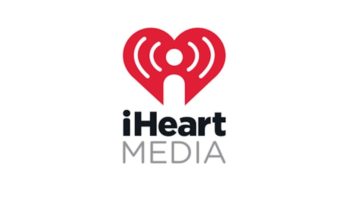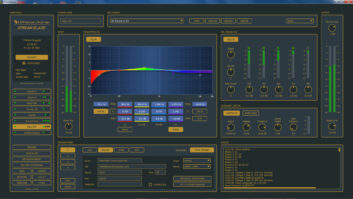The resurrection of RDS continues to gain momentum, following a flurry of activities in the fall and recent product announcements by manufacturers. The RBDS subcommittee of the NRSC, which had been dormant for several years, was reactivated at the fall NAB Radio Show.
New RDS gear was displayed there and other products are under development.
Allen Hartle, CEO of The Radio Experience, said his company is responding to the need to make RDS installations easier for chief engineers.
“At many sites, just getting the RDS data from the studio to transmitter site can be a logistical nightmare,” Hartle said. Stations often have to cobble together links with a combination of short-haul modems, RS-422 connections and interfaces to STL transmitter and receiver data ports. For large sites where each station has its own RDS data feed, the problems become even more difficult.
The Radio Experience recently released a dynamic data processor allowing up to six RDS signals to be combined at the studio site and sent to the transmitter over one STL data channel or TCP connection. The signals are split at the transmitter into separate RS-232 feeds for RDS encoders.
“We expect to be introducing more RDS hardware at NAB next spring,” Hartle said.
Personalized radio
Other suppliers focus on ways to generate a revenue stream with RDS.
Stratos Audio has unveiled an interactive advertising system developed in partnership with Motorola and Hyundai Autonet. The system features one-button purchase capability and can be used for electronic purchasing of CDs and other items being advertised by the station. “Now playing” data is obtained from a station’s automation system and routed to the StratosAudio database.
It is packaged in the appropriate format and returned to the station for use on the station’s RDS subcarrier and Web site or e-commerce and m-commerce applications. Stratos is testing the system in conjunction with WSNI, a Clear Channel station in Philadelphia.
StratosAudio CEO Kelly Christensen described the development of interactive radio as a three-phase process. The first phase is where the technology is today, the second involves promotions via the Web and wireless devices along with real-time usage reporting and e-commerce. The third phase involves embedded interactive wireless devices enabling instant Web and wireless e-commerce.
DMarc Networks touts another money-making use for RDS: personalized radio messages. Listeners can go to dMarc’s radiogreetings.com Web site and pay to enter a text message that will be displayed on select major-market stations at a date and time of their choosing. DMarc recently announced a partnership to deploy its dRDS system on 53 Clear Channel stations in southern California.
The company also offers DMarc Web Manager, a desktop program that enables stations to change the RDS text message by daypart, manage available inventory and handle reporting and billing.
Listeners respond
The largest deployment of RDS gear in the United States to date was announced recently by Clear Channel, which expected to have equipment installed in 192 of its FM stations in the top 50 markets by the end of November.
Clear Channel selected the Audemat-Aztec FMB 80, a dynamic RDS generator with TCP/IP connectivity, for use in its stations, and will use the technology to display “now playing” information, as well as traffic alerts, station call letters and other information.
The group’s director of engineering, Jeff Littlejohn, said the move isn’t entirely about making money.
“There may be some future revenues related to this project, but our real reason for implementing the service was so that we could fulfill the needs of our listeners. We have received hundreds of calls from listeners thanking us for implementing RDS. By serving our customers better, we give them one more reason to listen longer, and that’s where the real payback will be realized.”
Another potential revenue stream for broadcasters is the Data Radio Channel or DARC, a 76 kHz FM subcarrier that can send data at 16 kbps. DARC can be used to send text, pictures or Flash video and audio files originating from Web sites or servers. DARC can be used in conjunction with RDS, for longer text messages, traffic management systems, real-time information services and electronic billboards. Tests for several high-speed subcarrier applications using DARC are underway.
One concern for cash-strapped broadcasters is investing in a technology that is relatively future-proof. Most developers of RDS services stress that great pains have been taken to ensure that their datacasting systems will work both with today’s analog technology and tomorrow’s Ibiquity deployments
While RDS has been well-deployed throughout Europe, interest in the United States waned shortly after its introduction about a decade ago. Several factors seem to be favoring the renewed interest in the technology. Over 75 percent of new cars have receivers with RDS capability, public awareness has been raised by the inclusion of digital displays in XM and Sirius satellite receivers, broadcasters are anxious to develop new revenue streams and promotions opportunities and a few entrepreneurs are developing ways of making money with RDS technology.












